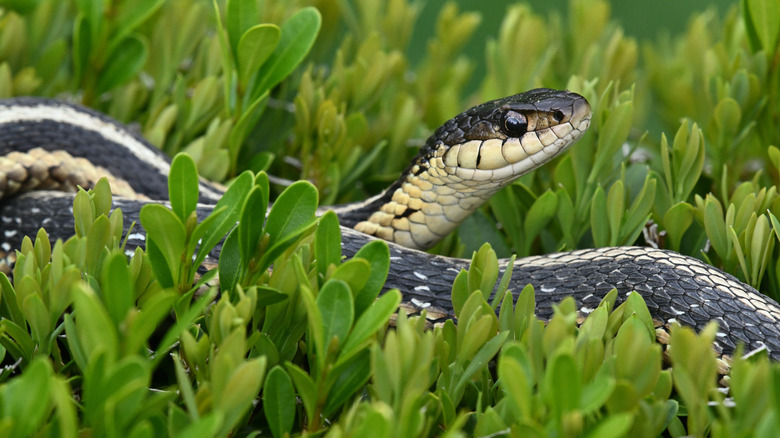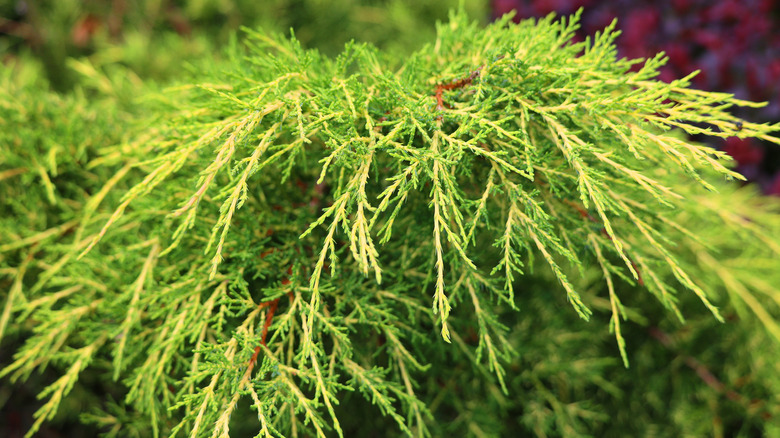The Hardy Shrub You Don't Want In Your Yard If You're Trying To Keep Snakes Away
We may receive a commission on purchases made from links.
Snakes can be scary, slithering creatures that pop up in your yard or garden. It's more common to see snakes in the warmer months and hotter climates. Some common ways to deter snakes include keeping your lawn neatly trimmed, removing tree branches, and eliminating areas of standing water. While some garden plants can help keep snakes at bay, some shrubs can actually attract them. If you're not a fan of snakes, even though they can be helpful to your garden, the hardy shrub you don't want in your yard is creeping juniper (Juniperus horizontalis)
Creeping juniper is a shrub that grows low to the ground. The name comes from its tendency to grow out instead of up. There are different varieties of juniper ground cover plants, and they all tend to spread outward. This particular variety can extend up to 20 feet but rarely exceeds three feet in height. It has a green to a bluish-green leafy exterior with round cones and thrives best in USDA hardiness zones three to nine, enjoying plenty of sun without the need for much water. While creeping juniper is popular, there are many other varieties of juniper ground cover to choose from, all of which can potentially attract snakes.
Why snakes like creeping juniper (& how to remove it)
Creeping juniper attracts snakes, not because of the plant itself, but because of the shelter it provides. The ground cover it creates is the perfect hiding spot for snakes, since it's cool, shady, and covered. Snakes don't like to dry out in the hot sun, so they seek shelter to help regulate their body temperature. Creeping juniper provides an excellent roof of dense vegetation for them to hide under.
There are many mistakes people make when trying to get rid of snakes, from store-bought repellents to using garden tools as weapons. If you have creeping juniper, your best method of defense against snakes is to remove it from your yard. Your first task is to get some garden gloves and pruning shears, like these Craft911 Japanese Steel Pruning Shears on Amazon. Use these to snip the center wood of the creeping juniper plants. Then, you can use an herbicide directly on the center root of the plant.
Leave the herbicide on for a few days to do its job. When you notice the leaves are brown, dig down to the roots in the soil with a trowel to expose them. Then, pull up all the roots by hand. If necessary, you can use a shovel to ensure you get down deep enough in the soil. Finally, follow the manufacturer's recommended waiting period before replanting grass or flowers after applying the herbicide.

